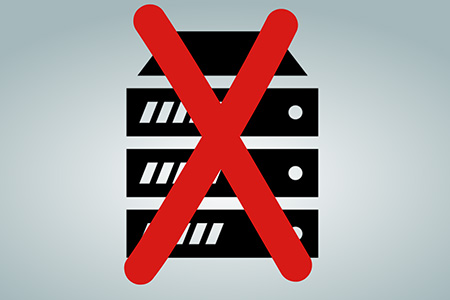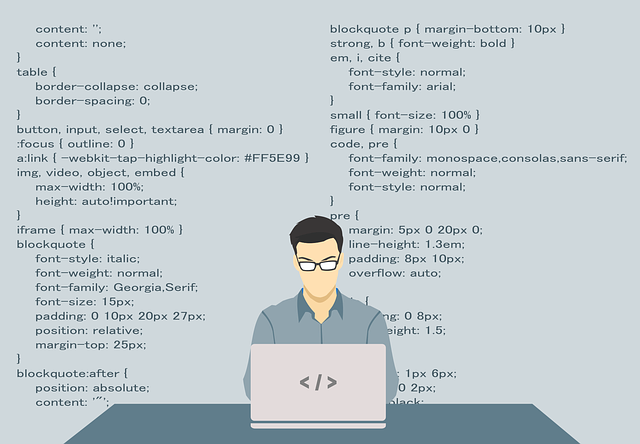Servers have been an important part of computing architecture for decades. But with the introduction of the cloud, organizations started moving to web-based server infrastructure that started the era of serverless architecture. Along with serverless, there has been another change that is ongoing in the software industry, the low-code or no-code approach. A low-code approach provides a development environment where software applications can be created using a graphical user interface instead of writing thousands of lines of code manually. Several trends have been observed in both of the technologies in recent times.
1. The standardization of serverless applications

Serverless is still a relatively new technology, and there is already a robust ecosystem of available platforms and tools. However, this domain had been lacking standardization and interoperability between cloud service providers. To bring some stability in this domain, several renowned organizations including SAP, IBM, Pivotal, Google, and Red Hat have come up with an open-source community project called Knative. This project offers components for deploying, managing, and running serverless, cloud-native applications on Kubernetes. The platform can simplify the process of deploying and running container-based serverless applications on any cloud.
In addition, with the evolution of standards such as CloudEvents, users don’t have to use a single cloud service provider for services anymore. Using this project, organizations can create poly-cloud applications with functions that consume services from various providers as part of a single solution.
2. The hybrid serverless models
Most enterprise customers still use inherently hybrid applications. Some of the apps run on AWS, others run in the on-premises datacenter, and others are created to run across public clouds. So, serverless technology is expected to become more mainstream in enterprise applications and could be integrated with other technologies (for example, microservices and traditional application architectures). However, Kubernetes has become one of the leading open-source container solutions and is expected to become the base for the serverless infrastructure. The present popularity and wide use of Kubernetes could introduce more hybrid containers-as-a-service models soon.
3. Innovations by major cloud services providers
AWS Lambda, a serverless computing service, has been a driving force toward the adoption of serverless computing. It is a serverless computing service offered by AWS. The users of this service can create functions, self-contained applications written using one supported language and runtimes. In addition, the users can upload these apps and runtimes to AWS Lambda, which runs those functions flexibly and efficiently. Moreover, it offers continuous scaling, no servers to manage, and consistent performance at any scale.
Users can experience a serverless workflow by combining AWS Lambda as the serverless processing node, AWS Fargate, and AWS Batch as cluster processing nodes, and then AWS Step Functions as the orchestrator to bind all these elements together. In addition, Google Cloud Functions and Microsoft Azure Functions can be used to enjoy the benefits of serverless architecture on the respective Google Cloud and Microsoft Azure platforms.
4. Serverless is growing beyond FaaS
The definition of serverless is evolving. It started with FaaS (function-as-a-service) but now includes other aspects of an application as well. FaaS is a category of cloud computing services that provides a platform enabling its customers to develop, run, and manage application functionalities without building and maintaining the infrastructure usually associated with developing and launching an app.
FaaS is a more narrow solution where developers can replace part or all of an app with FaaS functionality. Usually, it offers greater functionality than smaller needs and encompasses a variety of technologies. However, serverless application development requires serverless compute along with serverless storage and function-to-function networking. In addition, the advantage of serverless architecture is bringing innovation to all these capabilities and will be easily available to the developer. Using such serverless architectures, smaller teams and developers can develop their product without investing much into scalability or server maintenance. This can help enterprise developers reduce their time-to-market as well.

5. The evolution of low-code beyond app development
Low-code and enterprise SaaS (Software-as-a-service) is reducing the workload of IT development projects and minimizing the need for specialized technical skills. In addition, these services are helping to accelerate the digital transformation. The trend has allowed solutions-orientated employees to create valuable applications without having any engineering background. They can create apps using cloud computing services such as AWS, Google Cloud, and Azure and launch them into the market much faster and cheaper.
In addition, the SaaS platform allows the users to build an application without writing a line of code with the use of a graphical interface that allows users to drag and drop modular and reusable components to create their application. Sometimes minimal coding may be required to create custom feature sets, functionality, or integrations. The tech giant Microsoft recently announced a new low-code language named Power Fx. This new language is open-source, and others are expected to implement or use it as well. Moreover, it could become the standard for writing logic customization for Power Platform (a low-code platform).
6. The growing market of low code development platforms
The low-code development platform (LCDP) market is believed to grow at a compound annual growth rate of 27.9 percent over the forecasted period of 2021 to 2026. The use of the low code development platform has been increasing around the world due to rapid digitization and a strong ecosystem created for Agile and DevOps practices. The LCDPs are being deployed to facilitate the fast production and usage of functional software that can fulfill the data needs and the different and unique processes of the enterprise.
In October 2019, SATA Group Airlines disclosed its collaboration with OutSystems for the deployment of LCDP from the latter. Later, the OutSystems disclosed a strategic collaboration agreement with AWS. Another rising company named Outbrain allows users to create ad campaigns to organically personalize content (for example videos, articles, and infographics) to be featured on premium media sites. It also has a detailed activity dashboard from where its users can manage, optimize, and track their campaigns with real-time data and analytics.

7. Low-code to drive workflow automation
The global COVID-19 pandemic has accelerated remote work, and competitive pressure is also intensifying between top-performing companies. It increased the pressure on companies and their employees to continue to innovate in the digital sphere. The rapid rise of digitalization has accelerated the innovation into software platforms that offer the creation of truly automated workflows that transcend or support multiple systems. These software platforms have provided a solid foundation for innovators to build on.
Moreover, these low-code innovators are showing they know exactly what to do with it. There is an intersection of three trends, consumerization of enterprise software, the rise of distributed work, and growing competition and innovation, where low-code or no-code and automation platforms are proving to be valuable. If the low-code platforms with workflow automation are accessible to workers, they don’t need to write any extensive coding. With such benefits, the demand for low-code and automation is growing. Some of the examples of such platforms are Visual LANSA, GeneXus, Zoho Creator, and others.
Serverless and low-code: Reducing costs, boosting productivity
The serverless cloud computing model can reduce operational costs along with increased developer productivity. In addition, serverless technology can improve the accuracy and impact of technology services. On the other hand, access to simple low-code application building tools within the organization can improve productivity and solve business problems quickly. It allows their employees to apply the innovation of SaaS and modern mobile apps. These new technologies are very helpful and will become streamlined in the near future.
Featured image: Pixabay



